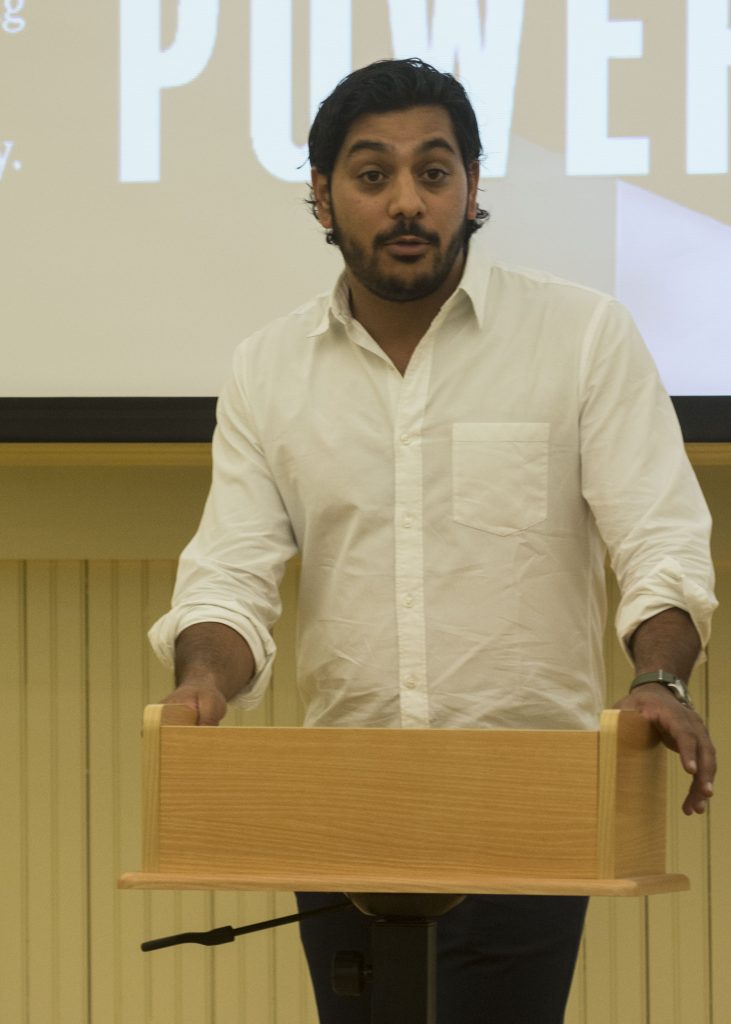Students and locals filled the Croft auditorium Tuesday night to attend a talk by Croft visiting speaker, Azam Ahmed of the New York Times. Ahmed focused his lecture on the idea that Mexico’s most powerful cartel is its government – not the drug cartels themselves, as many believe.
Ahmed is the Times’ bureau chief for Mexico, Central America and the Caribbean. He previously served as bureau chief for the paper in Afghanistan and also covered high finance and white-collar crimes in New York for the paper.
 He said his reporting experience led him to explore the role of the Mexican state in undermining civil rights in Mexico including the ongoing “Spygate” controversy, which he covered in Tuesday’s talk titled “Mexico’s Most Powerful Cartel.”
He said his reporting experience led him to explore the role of the Mexican state in undermining civil rights in Mexico including the ongoing “Spygate” controversy, which he covered in Tuesday’s talk titled “Mexico’s Most Powerful Cartel.”
Ahmed cited a 2014 case in which 43 college students riding on buses in southern Mexico en route to an upcoming protest were abducted by police. The federal government claimed it was the drug cartel who kidnapped them and burned their remains, and invited an international group of diplomatic immunity to come in and investigate. Once the experts began contradicting what the government was saying, the investigators were kicked out.
It was this event that sparked Ahmed’s interest in exploring the Mexican government. Like most, Ahmed originally thought most of Mexico’s issues were derived from the drug cartel, but he explained that after about a year in the country, he realized the drug cartel is not the disease but a symptom.
“They are a symptom of a system of which there are no repercussions – close to 96 percent of homicides in Mexico go unsolved,” Ahmed said.
In 2017, Mexico was the deadliest country in the world outside of war zones for journalists, next to Syria. Again, Ahmed assumed this was due to organized crime, which he said is partly responsible, but after doing some more research, he found the government had its own statistics that showed journalists received more threats from public officials than from anybody else.
“It blew my mind that in the most dangerous country in the world, the threat comes from the government itself,” Ahmed said.
Ahmed described how a prominent Mexican human rights activist once received suspicious text messages which they thought may have installed spyware software onto their phone. The theory was the government purchased this sophisticated spyware intending to use it against terrorists and organized crime but instead used it against innocent citizens like civil rights activists.
Ahmed discovered a lab in Toronto that cracked this undetectable software and found that it could turn on your microphone and listen to your conversation, or it could turn on your camera and watch you and take pictures of you. He would later find the suspicious messages on his phone.
The messages were disguised as a news story that when clicked, displayed a “broken link” which was how the software was transmitted to his phone. Ahmed eventually found out that the group of international experts who came in to investigate the 2014 kidnappings and were later kicked out were also spied on.
Ahmed reported on this and other aspects of the Mexican government in “Mexico Has Its Spyware. A Reporter Has a Few Phones to Juggle,” which was recently published in the New York Times.






